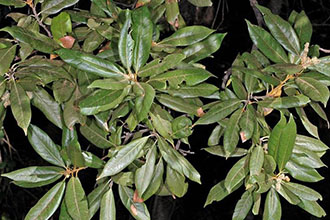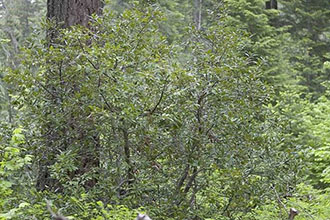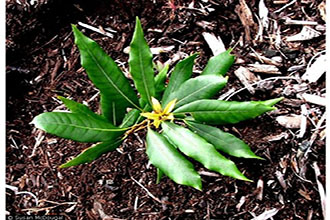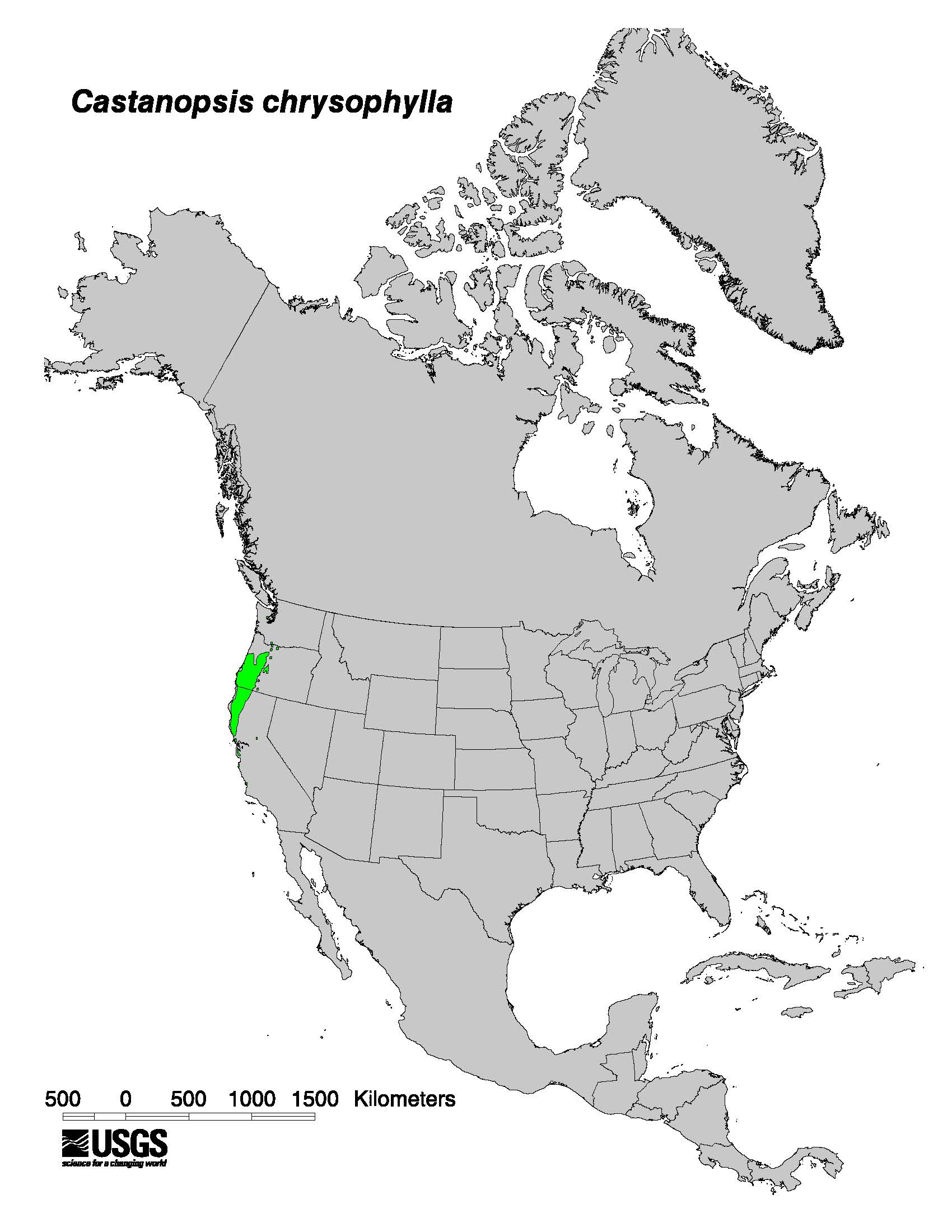Flowering and Fruiting- Giant chinkapin is monoecious, with unisexual staminate and pistillate flowers on the same plant. The staminate flowers form dense catkins 2.5 to 7.6 cm (1 to 3 in) long. One to three pistillate flowers are borne within an involucre at the base of the staminate catkin or separately along the stem. Pollination is adapted to wind, but bees frequent the flowers and probably aid in pollination, much to the dismay of beekeepers, for it imparts a bad taste to the honey in a mast year.
The fruit matures in the fall of the second growing season and contains one to three hard-shelled nuts within a very spiny golden brown bur 15 to 25 mm (0.6 to 1.0 in) broad, colloquially referred to as "porkypine eggs." The nuts are relatively large1,800 to 2,400/kg (830 to 1,100/lb).
The phenology of flowering, fruit ripening, and seed dispersal varies widely over the range of giant chinkapin: flowering (February to July), fruit ripening (August to October), seed dispersal (fall). Three years of phenological records at the H. J. Andrews Experimental Forest in Oregon show local phenology to be less varied: flowering (mid-June to mid-July), fruit ripening (mid-August to early September), and seed dispersal (peaking in late September, but prolonged into early December).
Seed Production and Dissemination- Vigorously growing giant chinkapin produce some seed every year with mast years occurring at 2- to 5-year intervals. Understory shrubs of the species flower infrequently. Sound seeds are produced by vigorous trees, apparently of seed origin, that are 40 to 50 years old, but the age of the first seed production is probably much less. Six-year-old stump sprouts have produced some sound seeds.
The production of sound seeds can be greatly reduced locally by insects. In a sample of seeds at three locations in the H. J. Andrews Experimental Forest, two sites had less than 15 percent of the seeds infested, but at the third site nearly 100 percent of the seeds had been attacked by insects.
The primary agents of dissemination of giant chinkapin seed are gravity, squirrels, and birds, not necessarily in that order of importance. Vertebrates are undoubtedly important vectors. Several species of birds feed on nuts, and clumps of young seedlings not originating from sprouts implicate squirrels in caching food.
Seedling Development- Reported germination ranges from 14 to 53 percent; one study found it to have the poorest rate of germination of all hardwoods in the Klamath Province of southwestern Oregon and northern California. Germination is hypogeal and takes place in 16 to 24 days. Although the rate of germination was not increased by cold stratification, which suggested that germination and establishment in the fall are possible, no such germination was observed during 3 years of study at the H. J. Andrews Experimental Forest. Natural seedlings of giant chinkapin which ranged from 15 to 45 cm (6 to 18 in) in height were found only in relatively open stand conditions in the Experimental Forest. The individuals appeared to have germinated under a light leaf mulch in partial shade. The tallest was 12 years old and the shortest 4, but the height-age relationship was poor. In the northern Coast Ranges of California, the best seedling establishment occurs on mesic sites without dense layers of understory vegetation.
Vegetative Reproduction- Giant chinkapin sprouts prolifically when cut or injured. Light understory fires cause vigorous basal sprouting. Even intense broadcast burns will not prevent basal sprouts from rapidly regrowing. Height growth of the sprouts can be rapid, outstripping young conifer growth for several years. Because of its aggressive sprouting ability, giant chinkapin is a problem for forest management on many sites.
The species is well adapted to a regime of frequent fires, which is reflected in the chaparral shrub form. Also, over much of the northern portion of the range of giant chinkapin, the tree form occupies ridgetop positions with other fire-adapted species. Its ability to exist with the potentially taller conifers may be the result of both its sprouting ability and relatively high fire frequency. (Silvics Manual)



